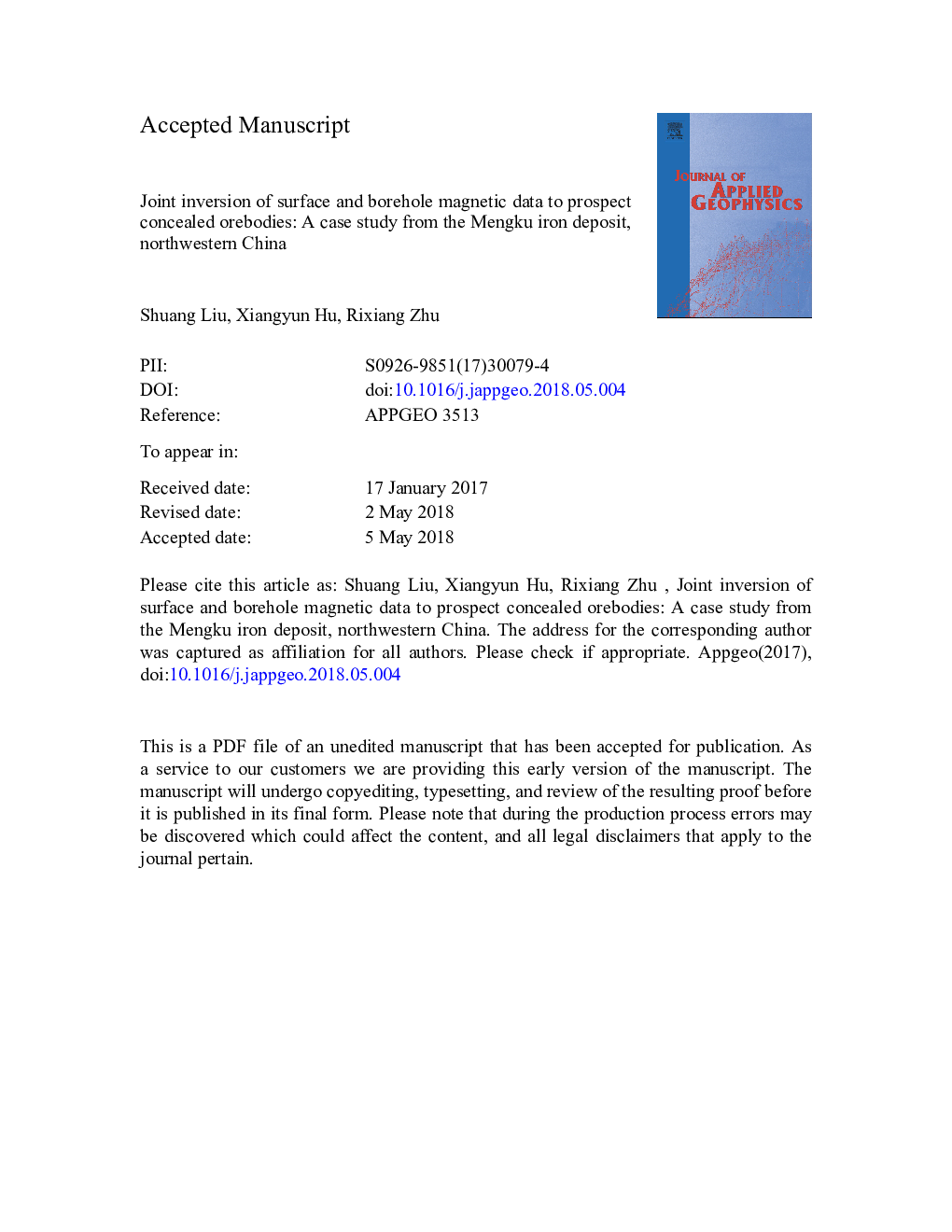| Article ID | Journal | Published Year | Pages | File Type |
|---|---|---|---|---|
| 8915372 | Journal of Applied Geophysics | 2018 | 38 Pages |
Abstract
The Mengku iron deposit is one of the largest magnetite deposits in Xinjiang Province, northwestern China. It is important to accurately delineate the positions and shapes of concealed orebodies for drillhole layout and resource quantity evaluations. Total-field surface and three-component borehole magnetic measurements were carried out in the deposit. We made a joint inversion of the surface and borehole magnetic data to investigate the characteristics of the orebodies. We recovered the distributions of the magnetization intensity using a preconditioned conjugate gradient algorithm. Synthetic examples show that the reconstructed models of the joint inversion yield a better consistency with the true models than those recovered using independent inversion. By using joint inversion, more accurate information is obtained on the position and shape of the orebodies in the Mengku iron deposit. The magnetization distribution of Line 135 reveals that the major magnetite orebodies occur at 200-400â¯m depth with a lenticular cross-section dipping north-east. The orebodies of Line 143 are modified and buried at 100-200â¯m depth with an elliptical cross-section caused by fault activities at north-northeast directions. This information is verified by well logs. The borehole component anomalies are combined with surface data to reconstruct the physical property model and improve the ability to distinguish vertical and horizontal directions, which provides an effective approach to prospect buried orebodies.
Related Topics
Physical Sciences and Engineering
Earth and Planetary Sciences
Geophysics
Authors
Shuang Liu, Xiangyun Hu, Rixiang Zhu,
